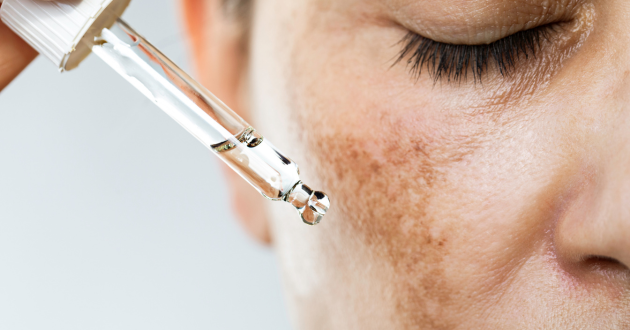The Power of Tranexamic Acid: A Solution for Skin Pigmentation and Bleeding
The Power of Tranexamic Acid: A Solution for Skin Pigmentation and Bleeding
Introduction

Tranexamic acid is a medication that has gained significant attention in cosmetic fields for its diverse applications. Initially introduced to control bleeding, it is now widely recognized for its effectiveness in treating various conditions, including dermatology and aesthetic medicine. This article delves into tranexamic acid's uses, benefits, and safety.
Tranexamic acid (TXA) is a synthetic derivative of the amino acid lysine. It works by inhibiting the activation of plasminogen to plasmin, an enzyme responsible for breaking down fibrin clots. By preventing this breakdown, tranexamic acid helps stabilize blood clots and reduce bleeding. It is used in many applications, from medicines to treat swollen throats and mouth ulcers to toothpaste used daily.
Medical Uses

1. Control of Bleeding:
Tranexamic acid is primarily used to reduce bleeding in various medical situations, including:
- Surgical Procedures: Administered preoperatively to reduce blood loss during orthopedic, cardiac, and gynecological surgeries.
- Trauma: Employed in emergency settings to control bleeding in trauma patients.
- Menorrhagia: Effective in treating heavy menstrual bleeding, relieving women with menorrhagia.
2. Hereditary Angioedema:
TXA can help prevent attacks of hereditary angioedema, a condition characterized by recurrent episodes of severe swelling.
Dermatological and Cosmetic Uses
1. Hyperpigmentation:
Tranexamic acid is the first OTC drug to be approved to improve melasma in many Asian countries. It has shown promising results in treating melasma and other forms of hyperpigmentation. Tranexamic acid inhibits melanin synthesis by interfering with the interaction between melanocytes and keratinocytes.
2. Post-Inflammatory Hyperpigmentation (PIH)**:
TXA is beneficial for individuals dealing with dark spots left after acne or other skin injuries.
3. Topical Formulations:
Tranexamic acid is available in creams, serums, and lotions. It is incorporated into skincare products to address pigmentation issues and improve overall skin tone.
Benefits of Tranexamic Acid
1. Effective Bleeding Control:
Its primary benefit lies in its ability to effectively control and reduce bleeding, making it invaluable in surgical and emergency settings.
2. Non-Invasive Treatment for Pigmentation:
TXA is a topical agent that offers a noninvasive solution for pigmentation problems, providing an alternative to more aggressive treatments like chemical peels and laser therapy.
3. Minimal Side Effects:
When used appropriately, tranexamic acid is generally well-tolerated with minimal side effects. Topical application further reduces the risk of systemic side effects.
Safety and Side Effects
While tranexamic acid is generally considered safe, it is essential to use it under medical supervision, especially when taken orally. Potential side effects include:
1. Gastrointestinal Issues:
Nausea, vomiting, and diarrhea can occur with oral use.
2. Thrombotic Events:
Although rare, there is a potential risk of thrombosis (blood clots), particularly in individuals with a history of thromboembolic disorders.
3. Allergic Reactions:
Some individuals may experience allergic reactions, including skin rashes and itching.
Conclusion

Tranexamic acid is a versatile medication with a broad range of applications in both medical and cosmetic fields. Its ability to control bleeding and address pigmentation issues has made it a valuable tool for healthcare professionals and skin care specialists. As with any medication, it is crucial to use tranexamic acid under proper medical guidance to ensure safety and efficacy.
* These statements have not been evaluated by the Food and Drug Administration. This product is not intended to diagnose, treat, cure, or prevent any disease.

 US Dollar
US Dollar

